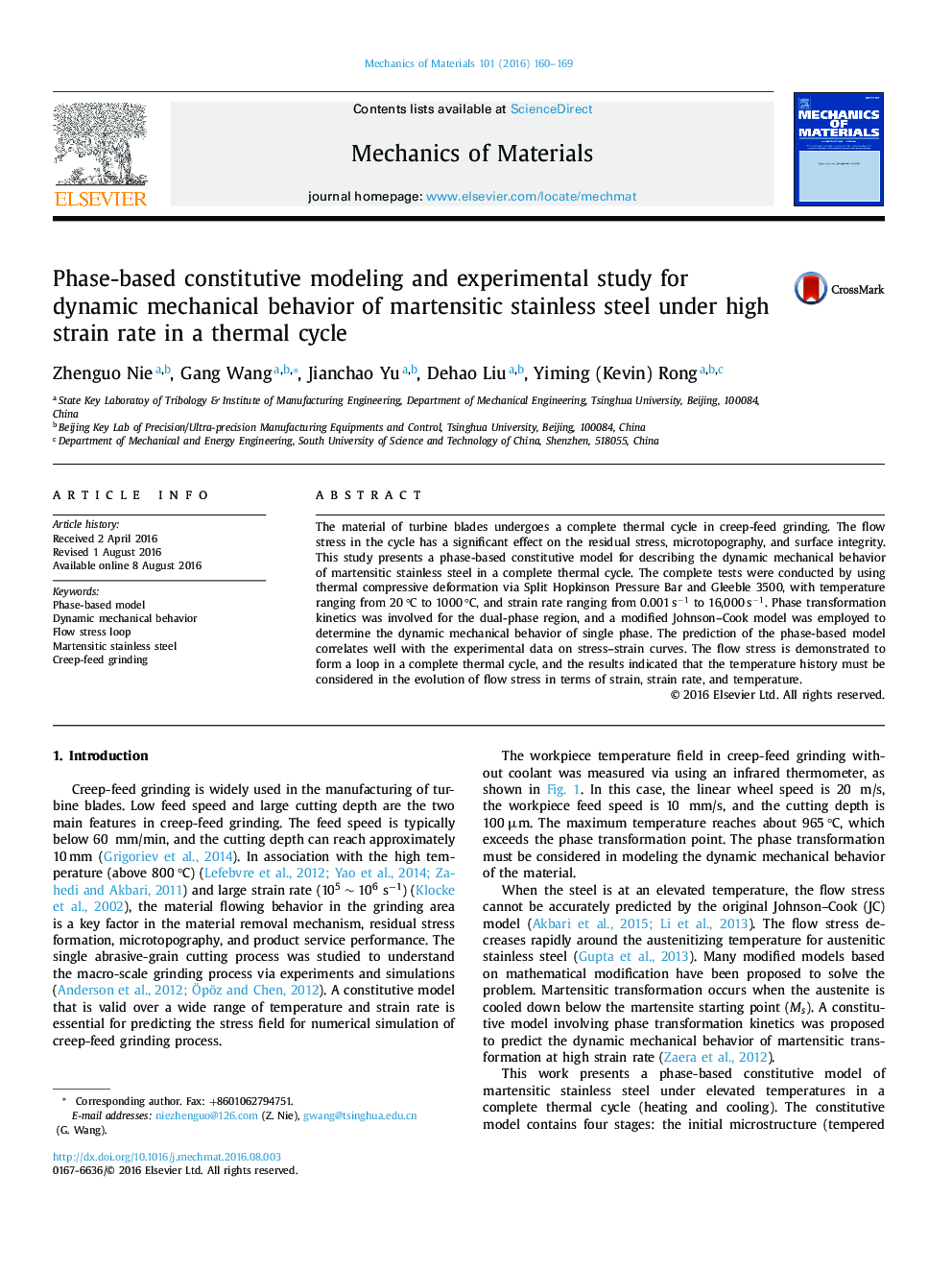| کد مقاله | کد نشریه | سال انتشار | مقاله انگلیسی | نسخه تمام متن |
|---|---|---|---|---|
| 799488 | 1467438 | 2016 | 10 صفحه PDF | دانلود رایگان |
• A phase-based constitutive model was proposed to predict the dynamic mechanical behavior of the martensite stainless steel in a complete heating and cooling cycle. The phase transformation must be considered under elevated temperature and high strain rate.
• The complete tests were conducted by using thermal compressive deformation via a Split Hopkinson pressure bar and Gleeble 3500, with a temperature range from 20 °C to 1000 °C, and a strain rate range from 0.001 s−1 to 16,000 s−1. Phase transformation kinetics was involved for the dual-phase regions, and a modified Johnson-Cook model was employed to determine the dynamic mechanical behavior of single phases.
• The stress forms a flow stress loop in a complete heating and cooling cycle, and the flow stress is not a single-valued function at a certain temperature and strain rate. It is a function of strain, strain rate, temperature and temperature history.
The material of turbine blades undergoes a complete thermal cycle in creep-feed grinding. The flow stress in the cycle has a significant effect on the residual stress, microtopography, and surface integrity. This study presents a phase-based constitutive model for describing the dynamic mechanical behavior of martensitic stainless steel in a complete thermal cycle. The complete tests were conducted by using thermal compressive deformation via Split Hopkinson Pressure Bar and Gleeble 3500, with temperature ranging from 20 °C to 1000 °C, and strain rate ranging from 0.001 s−1 to 16,000 s−1. Phase transformation kinetics was involved for the dual-phase region, and a modified Johnson–Cook model was employed to determine the dynamic mechanical behavior of single phase. The prediction of the phase-based model correlates well with the experimental data on stress–strain curves. The flow stress is demonstrated to form a loop in a complete thermal cycle, and the results indicated that the temperature history must be considered in the evolution of flow stress in terms of strain, strain rate, and temperature.
Figure optionsDownload as PowerPoint slide
Journal: Mechanics of Materials - Volume 101, October 2016, Pages 160–169
